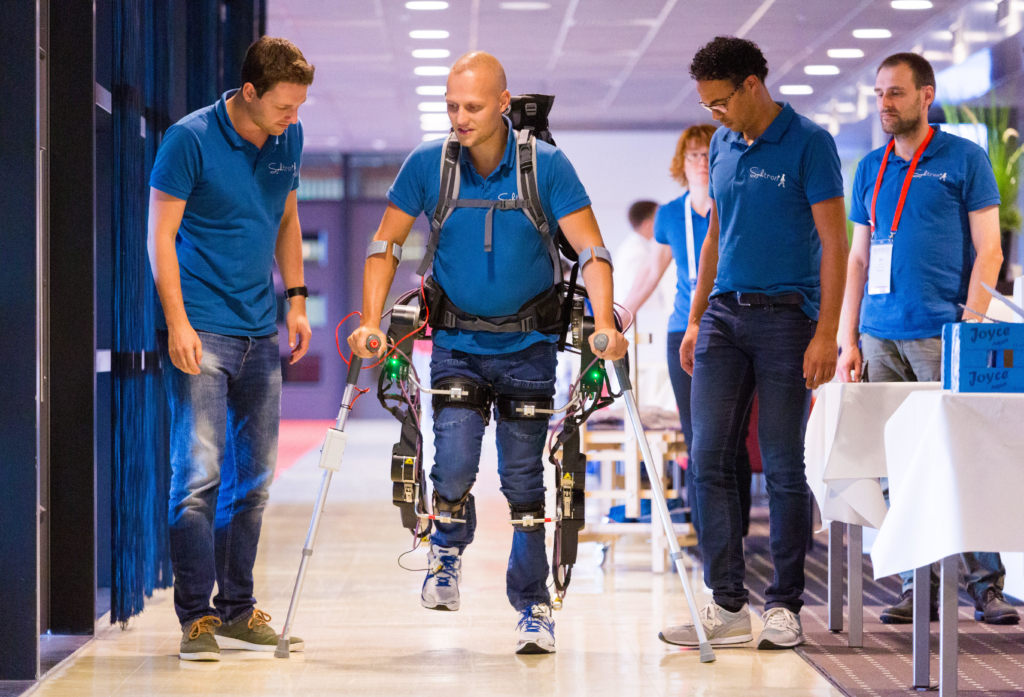Inspiring cooperation across disciplines and different areas of science and technology is often an enabler of significant breakthroughs in research and innovation. Cross-fertilisation of ideas and knowledge can enrich academic debate and foster new directions for research. COST Actions play a key catalytic role in bringing researchers together across the spectrum of research from fundamental science to social sciences, arts and humanities to make those vital connections.
COST Action WearableRobots (Wearable Robots for Augmentation, Assistance or Substitution of Human Motor Functions) focused on the integration of the different disciplines involved in this evolving field as well as engaging with a wide range of stakeholders to help improve the technology and its potential impact on society.

Wearable robotics is an emerging set of technologies that is looking to develop personal devices, such as exoskeletons, that support or augment human functions. This inevitably involves increased direct interaction between the robotic device and the human operator that opens numerous issues such as safety.
Connecting disciplines
“When the Action started there was a lot of research on robotic exoskeletons for medical application and also for supporting workers in industry,” says Dr Jan Veneman, Chair of the Action from Swiss company Hocoma Medical GmbH. “These involved separate research groups, funded from a variety of diverse sources and operating in different domains such as healthcare or industrial environments. Our aim was to bring everyone together.“
As wearable robots continuously interact with humans in multiple and varied situations, Human Robot Interaction, Ergonomics, and Ethical, Legal and Societal (ELS) issues are also considerations, along with early involvement of regulatory and other stakeholders, that are essential to ensure the optimum positive impact of these technologies for society.
“As well as the technical disciplines such as mechatronics, electronics, materials etc. we wanted to involve ELS topics from the start,” continues Jan. “This meant finding and engaging with people from the social sciences that were interested in robotics and their impact.”
As well as connecting disciplines the Action was able to connect different ongoing research programmes to ensure exchange of knowledge and reduce overlap. These included major projects such as Eurobench, that was establishing a European benchmarking system for the performance of bipedal robots, and the COVR project focusing on the safety of collaborative robots.
“Our aim was to bring everyone together”
Dr Jan Veneman, Chair of WearableRobots


Standards

The Action has also played a major role in shaping the future of the wearable robotics field thanks to the publication of a series of scientific review papers covering the different aspects of wearable robots and the involvement of members within the standardisation community. “Several participants in the Action were experts on international standards development,” explains Jan. “And in our COST meetings they could discuss potential standards with the wider community and get the feedback they needed.”
This resulted in the Action, together with Eurobench, being able to create an EU level workshop agreement with CEN/CENELEC (the pan European Standards organisation). This produced protocols to benchmark robots walking over ground and obstacles and enable wider comparison of performance. The Action also funded Short-Term Scientific Missions to enable researchers to test their prototypes at the same facility in Madrid using the protocols.
Jan is particularly proud of the Training Schools organised through the Action. “These were a key achievement for integration of different disciplines,” he states. “Participants were exposed to information and experience they would not otherwise be able to normally access and made valuable connections between researchers that will continue beyond the Action.”

Additional information
Series of scientific peer-reviewed Open Access papers on the core topics of the Action:
- A taxonomy of ethical, legal and social implications of wearable robots: an expert perspective.
- Implementing Ethical, Legal, and Societal Considerations in Wearable Robot Design.
- Challenges and solutions for application and wider adoption of wearable robots.
- Occupational exoskeletons: A roadmap toward large-scale adoption. Methodology and challenges of bringing exoskeletons to workplaces.
